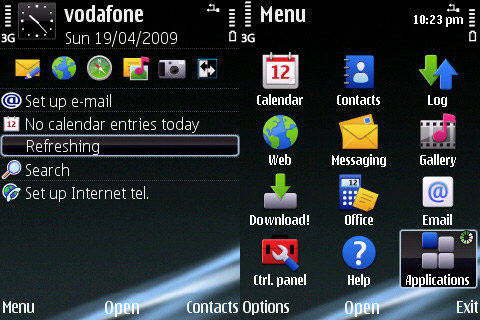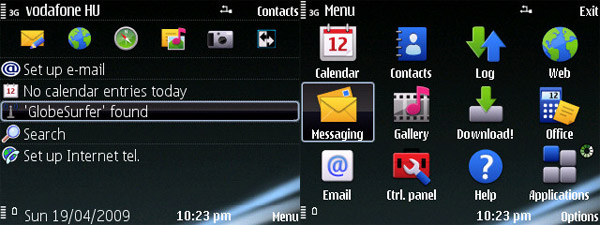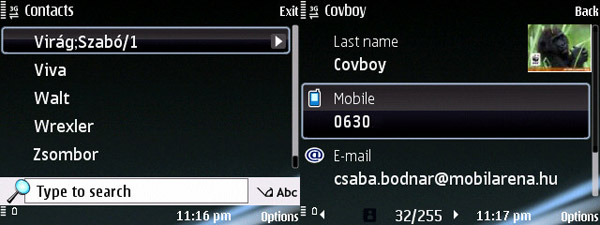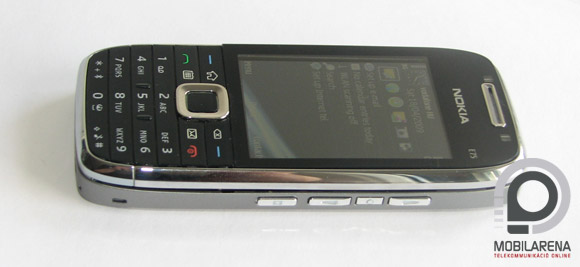Menu, hardware, contact list
The heart of the phone is the same that has been present in recent Nokia handset, the 369 MHz ARM11 CPU has enough performance to keep most operations lag-free. The user has 50 megabytes of storage space to use, which is basically enough, as we have the 4 GB card. The good hardware needs good software, this is Symbian OS 9.2 Series 60 V3.2, and Home Screen 1.0, the same as on E71 and E66. The point of the home screen is that we cannot only switch profiles, but modes as well, there are two of these, business and home, and the chosen mode defines the contents displayed on the standby screen. For example when we’re at home we are probably not interested in the date of the next meeting, but the media player is more useful, and all these can be set up.
New menu features can be seen in the settings. Here we can discover that the display cannot rotate only when we slide the phone open, but it has a gyroscope which makes the screen rotate according to the phone’s position. The same technology makes it possible to mute calls and the alarm clock by putting the phone upside down. The screen’s rotation speed is quite fast, Nokia doesn’t have such eye-candy like Samsung or LG, they don’t want to hide waiting times behind some animation.

The main menu with 12 icons finally won’t scroll, they’ve managed to make all features accessible through the icons. This is sometimes strange, as if we want to access the camera we can find in the applications inside the media menu, but of course that’s why we have a dedicated button on the side so we won’t have such problems. Emailing is now more emphasized, but I’ll talk about that a bit later. Customizability is done in the usual ways, we can set themes, profiles and edit the standby screen to make things look like we want them to.

The contact list is complex as usual, there is a theoretical limit for the number of entries (the internal memory), but it’s practically impossible to fill it up. Contacts can have caller images, which is displayed on full screen during incoming and outgoing calls. The phone automatically creates a voice ID for contacts and there is a separate one for every contact method, it worked really good, even though I mostly had Hungarian names in the list.

Voice quality is good during calls, although some have been complaining about an echo, which can be solved by decreasing the volume. Handsfree volume is terrible, it’s distorted, we can barely hear anything, the engineers should have improved this as the handset even automatically switches to the handsfree speaker if we open the phone during a call.
A cikk még nem ért véget, kérlek, lapozz!











